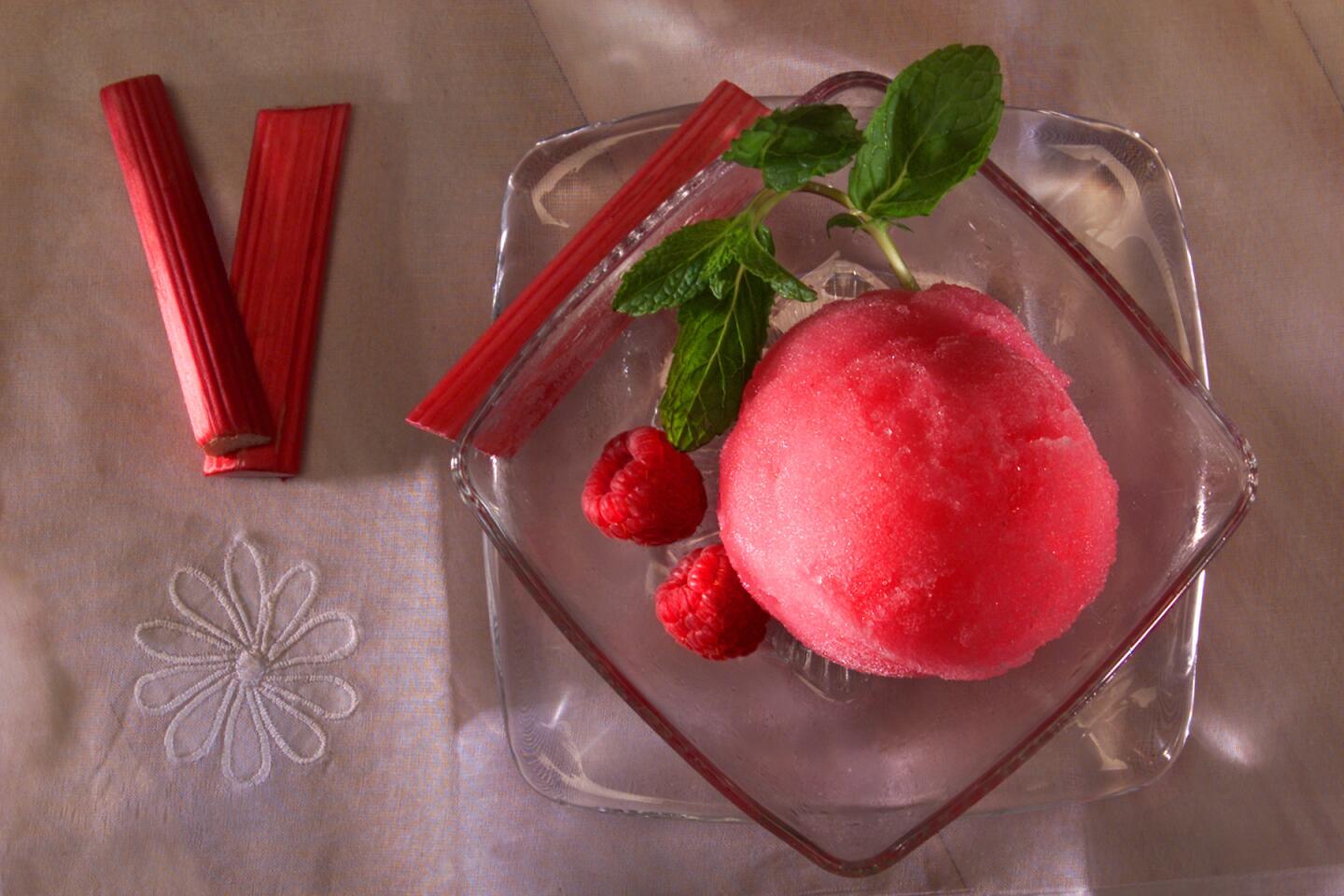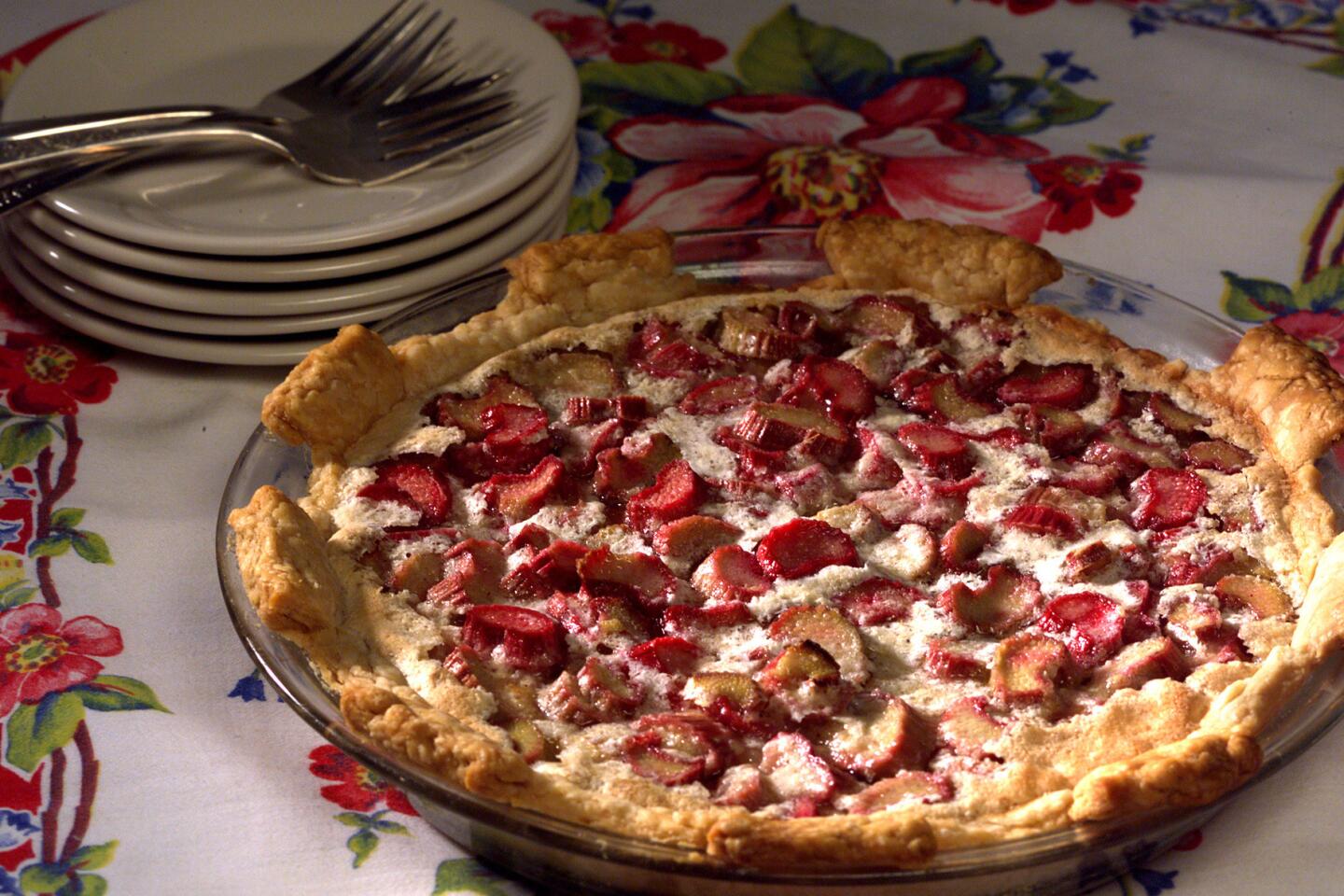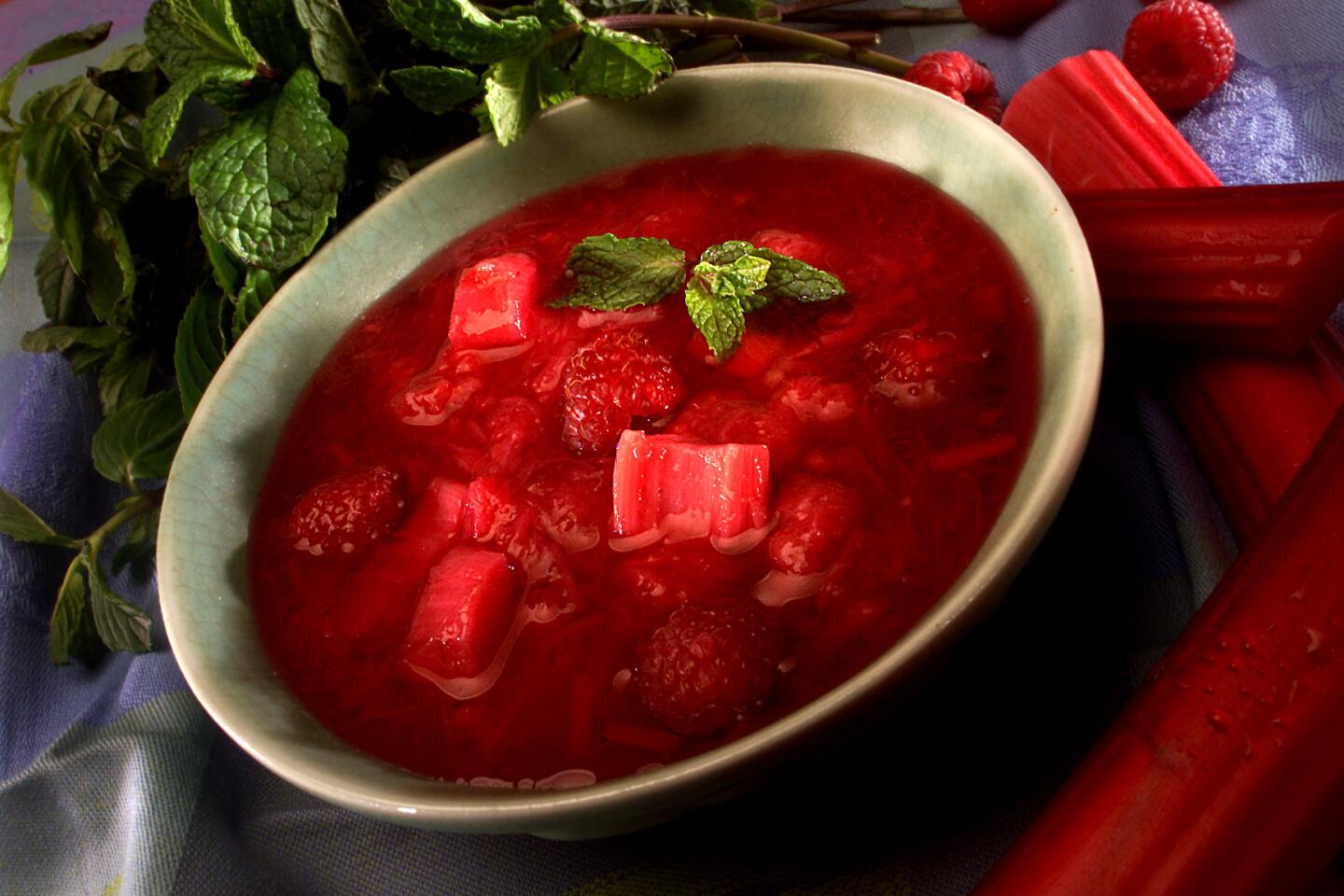Buy this now: 12 rhubarb recipes
Let’s face it: Rhubarb is not easy. It’s difficult to grow and sometimes even to find in Southern California, and because of its tart, tart taste it needs a certain amount of cosseting. But treat it right, and it can make your dessert.
Precisely because of that tart, nearly astringent flavor, rhubarb makes a superb complement to many of the simpler, sweeter fruits of spring and summer. It’s a natural paired with strawberries (it’ll even keep the berry’s color fresh and red). It’s good with raspberries. And if handled correctly, it’s even an interesting companion to peaches and nectarines.
You can (and should) use it in savory dishes too. That tangy acidity cuts through any kind of fatty meat, like duck or pork, adding a nice complexity.
Here’s a fun fact: While the produce world is full of fruits we consider vegetables (tomatoes, eggplants, cucumbers, squash), rhubarb is actually a vegetable we treat as a fruit.
Most rhubarb is grown in three states: Washington, Oregon and Michigan, but you can find it occasionally at Southern California farmers markets. I buy mine at the Sunday Long Beach Marina market from a farm called Newport Acre.
The funny thing about rhubarb is how dramatically it changes when cooked (and cook it you must, unless you want to suffer from a serious case of the puckers -- which I sometimes do, but that’s another story). What looks like it might be stringy, hard and bitter quickly becomes silken and spicy.
Preparation is simple. Trim the cut ends and any leaves that remain -- rhubarb leaves are high in oxalic acid, which is poisonous (though you’d have to eat quite a bit to become ill, it could upset your tummy). Rhubarb is sometimes stringy and some cooks prefer to peel it. That’s really not necessary, though -- if the stalks seem a little stringy, I prefer to simply cut it into smaller pieces.
How to choose: Look for rhubarb that is firm and crisp. Check the cut ends to make sure they’re not dried out or softening. Reject any rhubarb with soft spots. Though we tend to think of rhubarb as being bright red, be aware that there are green varieties as well, and that even the red types might show a green blush at either end.
How to store: Keep rhubarb in the refrigerator sealed in a plastic bag.
Are you a food geek? Follow me on Twitter @russ_parsons1
More to Read
Eat your way across L.A.
Get our weekly Tasting Notes newsletter for reviews, news and more.
You may occasionally receive promotional content from the Los Angeles Times.












